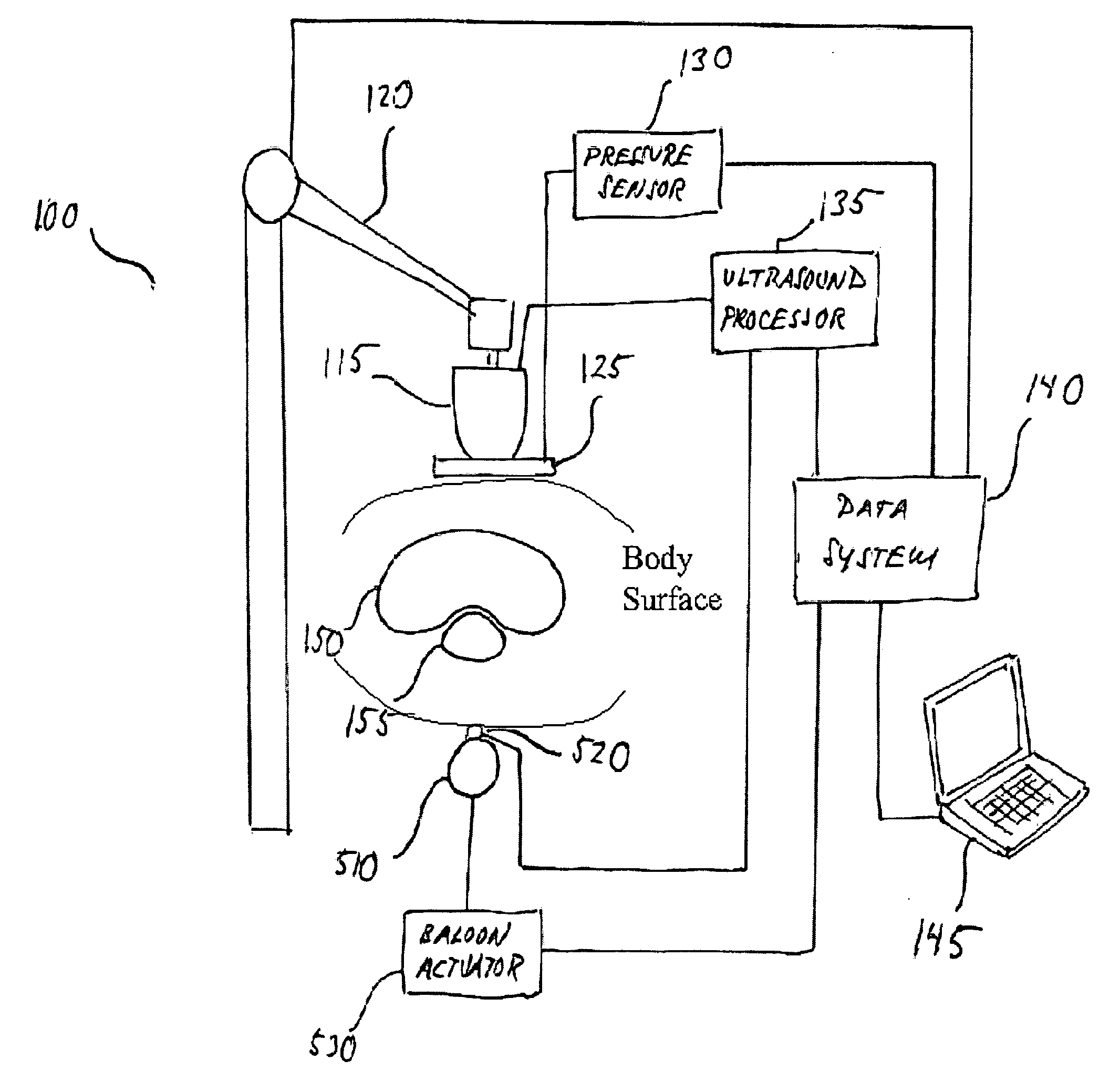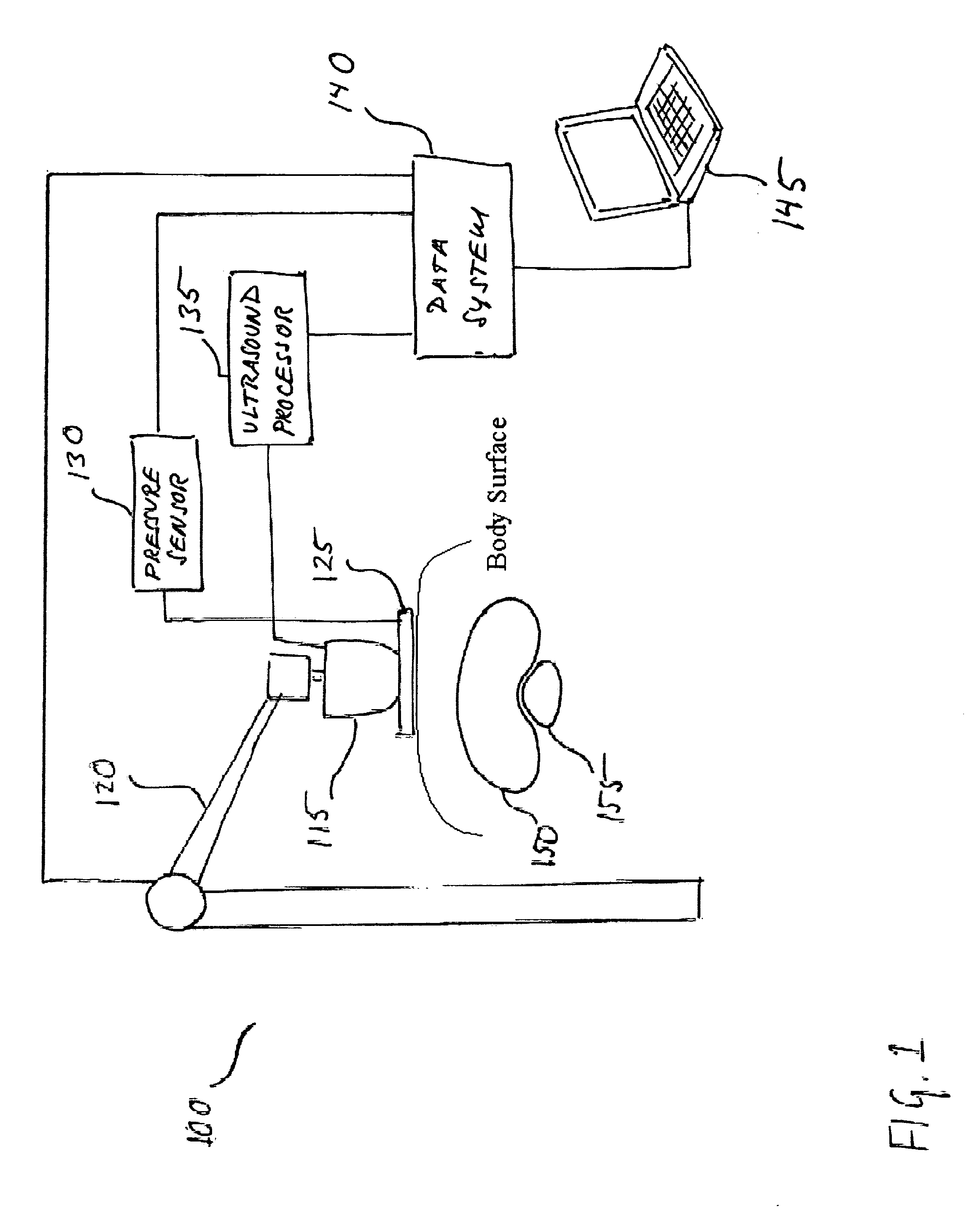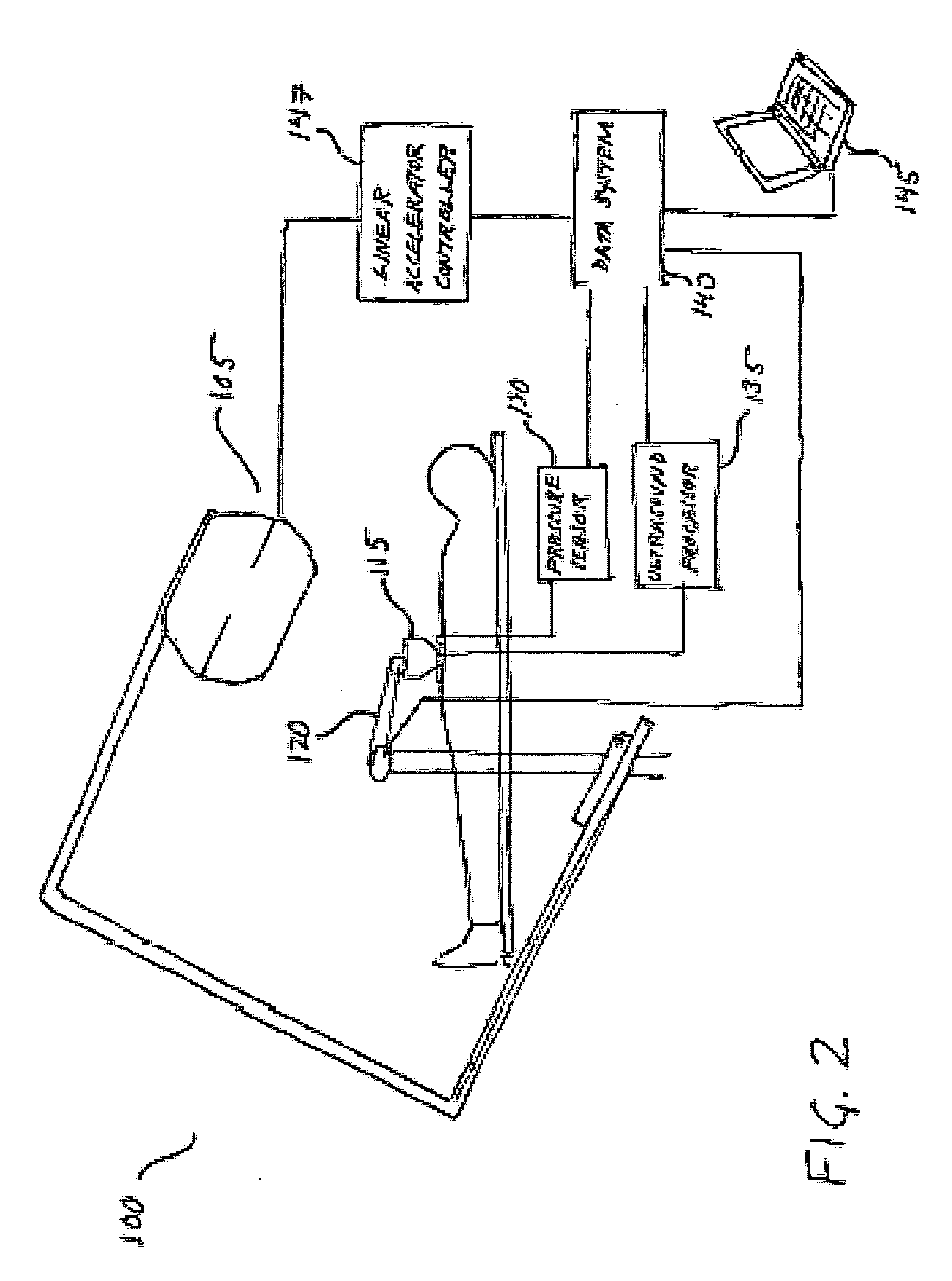Ultrasound strain imaging in tissue therapies
a technology of ultrasound and tissue therapy, applied in the field of radiation oncology, can solve the problems of unreliable tumor location images, inability to provide soft tissue imaging, and displace surrogate implants, so as to maximize radiation doses to tumors, reduce the exposure to surrounding healthy tissue, and maximize radiation doses
- Summary
- Abstract
- Description
- Claims
- Application Information
AI Technical Summary
Benefits of technology
Problems solved by technology
Method used
Image
Examples
Embodiment Construction
[0027] As used herein, ultrasound strain imaging refers to acquiring ultrasound imagery of an anatomical region, which includes a targeted anatomical structure and its surrounding tissue, region while precisely incrementally applying incremental amounts of substantially precise pressure against an area of patient's body in the vicinity of the anatomical region abdomen. The applied pressure exerts strain on the tissue within the abdomen anatomical region, including the targeted anatomical structure and prostate and its surrounding tissue. The surrounding tissue and the targeted anatomical structure prostate respond differently to the exerted strain such that the tissue and the targeted anatomical structure prostate will compress at different rates. By correlating the ultrasound data acquired with and without strain, the contours of the targeted anatomical structure prostate may be identified based on its different response to the strain.
[0028] For purposes of illustration and not li...
PUM
 Login to View More
Login to View More Abstract
Description
Claims
Application Information
 Login to View More
Login to View More - R&D
- Intellectual Property
- Life Sciences
- Materials
- Tech Scout
- Unparalleled Data Quality
- Higher Quality Content
- 60% Fewer Hallucinations
Browse by: Latest US Patents, China's latest patents, Technical Efficacy Thesaurus, Application Domain, Technology Topic, Popular Technical Reports.
© 2025 PatSnap. All rights reserved.Legal|Privacy policy|Modern Slavery Act Transparency Statement|Sitemap|About US| Contact US: help@patsnap.com



